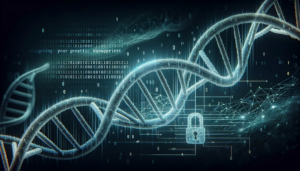Navigating the Digital Genome: 23andMe’s Security Incident Unraveled

In the world where our digital and biological identities intertwine, the recent events surrounding 23andMe, a renowned genetic testing company, have stirred substantial concern and dialogue about data security, particularly when it involves sensitive genetic information. This incident underscores not just the vulnerabilities inherent in the digital sphere, but also the profound implications for privacy in the realm of genetic data.
Understanding the Incident
In a surprising turn of events, 23andMe faced a situation that many modern companies dread: a data security incident. However, this wasn’t a straightforward case of system compromise or a hacking onslaught. Instead, it was the consequence of “credential stuffing,” a technique where bad actors use previously breached username-password combinations to access accounts across multiple platforms.
What stands out in 23andMe’s scenario is that the data accessed wasn’t forcibly extracted from a fortified database but was rather accumulated through the exploitation of recycled login credentials. The incident primarily affected users of the DNA Relatives tool, an optional feature facilitating the connection of individuals based on shared genetic markers.
The Implications of Shared Genetic Data
The Sensitivity of Genetic Information
Genetic data represents one of the most intimate forms of personal information. Beyond basic identification, it carries implications for potential health conditions, familial connections, and ancestry. When users opt to engage with services like DNA Relatives, they’re seeking biological connections, possibly uncovering long-lost family members or ancestral roots. However, the exposure of such information could potentially lead to unauthorized tracking of family trees, discrimination, or even identity theft.
Privacy Beyond the Hack
While 23andMe emphasizes that there wasn’t a direct ‘breach’ of their systems, the incident highlights a critical aspect of data privacy. Users must recognize the importance of unique credentials for different online services, especially for platforms holding sensitive information. The compromise of even non-financial platforms can lead to a cascading effect, affecting various aspects of a user’s digital and real-world identity.
![]()
Securing Your Genetic Footprint
Vigilance with Shared Information
Users engaging with DNA sharing and other genealogical services should be circumspect about the amount and type of information they disclose. It’s advisable to:
– Limit the exposure of identifiable information on such platforms.
– Scrutinize the privacy policies to understand how your data is stored, processed, and shared.
– Utilize features like multi-factor authentication (MFA) and strong, unique passwords.
The Industry’s Responsibility
Genetic testing companies are not merely repositories of sensitive data, but they’re gatekeepers of personal biographical libraries. They have a heightened responsibility to safeguard this information. This role includes not only fortified cyber defenses but also clear, transparent communication with users regarding data usage and security protocols.
—
The incident at 23andMe serves as a clarion call for both users and companies about the evolving nature of data privacy. As we progressively intertwine our lives with digital platforms, the responsibility for safeguarding our most intimate data is both a personal and collective endeavor. The digital age demands not just awareness, but proactive engagement with the principles of data security.